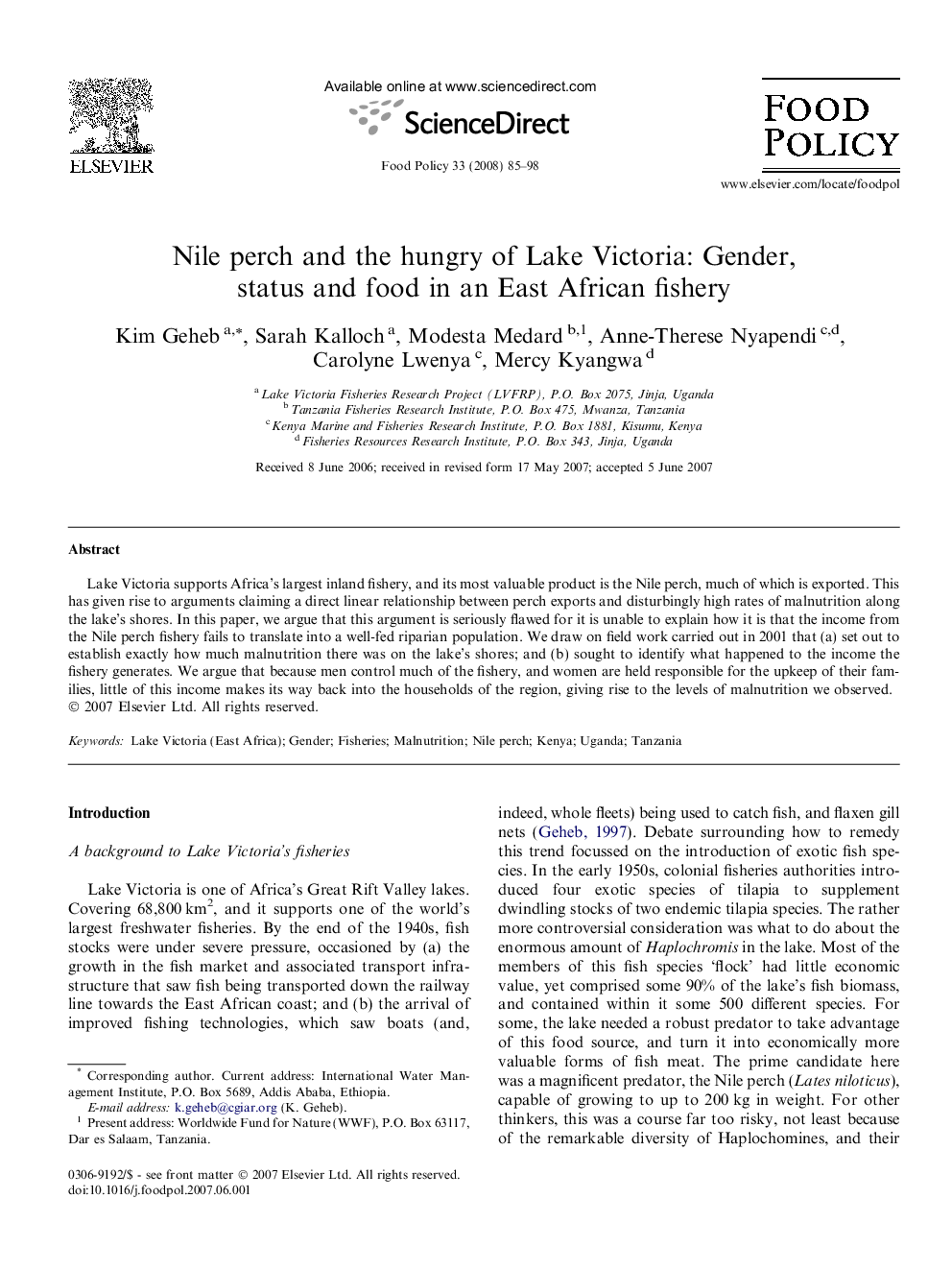| Article ID | Journal | Published Year | Pages | File Type |
|---|---|---|---|---|
| 5071151 | Food Policy | 2008 | 14 Pages |
Abstract
Lake Victoria supports Africa's largest inland fishery, and its most valuable product is the Nile perch, much of which is exported. This has given rise to arguments claiming a direct linear relationship between perch exports and disturbingly high rates of malnutrition along the lake's shores. In this paper, we argue that this argument is seriously flawed for it is unable to explain how it is that the income from the Nile perch fishery fails to translate into a well-fed riparian population. We draw on field work carried out in 2001 that (a) set out to establish exactly how much malnutrition there was on the lake's shores; and (b) sought to identify what happened to the income the fishery generates. We argue that because men control much of the fishery, and women are held responsible for the upkeep of their families, little of this income makes its way back into the households of the region, giving rise to the levels of malnutrition we observed.
Related Topics
Life Sciences
Agricultural and Biological Sciences
Food Science
Authors
Kim Geheb, Sarah Kalloch, Modesta Medard, Anne-Therese Nyapendi, Carolyne Lwenya, Mercy Kyangwa,
